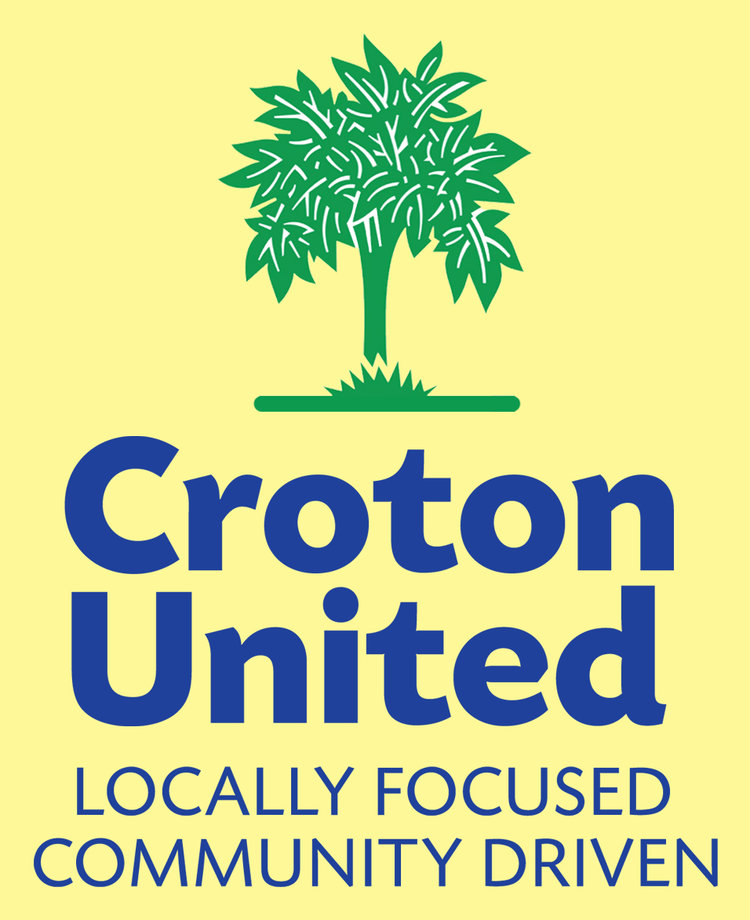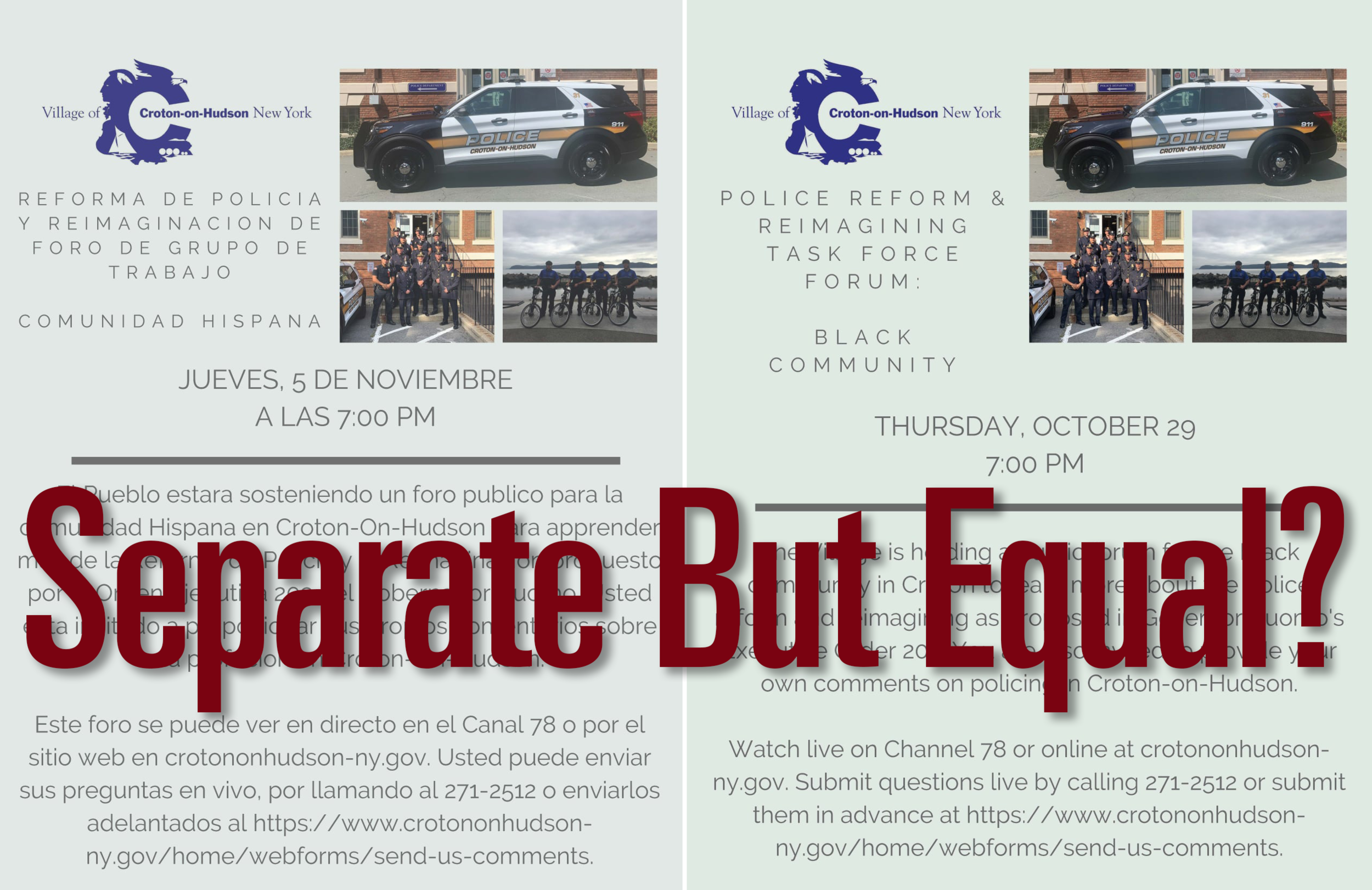The following letter was published in this week’s issue of the Gazette.
To the editor:
Plessy and Ferguson? Meet Pugh and King.
2020 has been a landmark year in many unfortunate ways. A year ago, who would have thought that Croton on Hudson would have an official policy of segregated public meetings? The quickest way to bring a conversation to a screeching halt in Croton nowadays is to point out that the Croton Board of Trustees held an official meeting for “black community” residents on October 29 and a “Hispanic community” forum on November 5.
I understand that these meetings, while separate, were equal to the “public forum” on November 19, “held for the entire community.” But slapping woke labels on old practices don’t make them any less racist. What is next: water fountains labeled “BIPOC” and “non-BIPOC”?
“2020 has been a landmark year in many unfortunate ways. A year ago, who would have thought that Croton on Hudson would have an official policy of segregated public meetings? The quickest way to bring a conversation to a screeching halt in Croton nowadays is to point out that the Croton Board of Trustees held an official meeting for “black community” residents on October 29 and a “Hispanic community” forum on November 5.”
This is the typical Croton habit of trying to imitate trends and doing it poorly. As a quick linguistic digression: “black” is now capitalized in both the AP Stylebook (used by most newspapers) and the NY Times because as the Times explained: “this style best conveys elements of shared history and identity.” And “Hispanic” is offensive because it discriminates by excluding people from South America’s largest nation (who speak Portuguese) and it is doubly offensive because it is a reminder of the imperialist conquest of the indigenous peoples from whom the land was brutally stolen. The proper term used to be “Latino” but it turns out that Spanish is a gendered language and this offended American sensibilities; the correct usage is now “Latinx” even though this is not proper Spanish and in many places overseas the “Latinx” coinage is seen as an example of American arrogance riding roughshod over less powerful cultures.
Perhaps the Croton Diversity & Inclusion Committee needs to retrain the folks at the Municipal Building.
And then you get into the whole issue of who is allowed to give “input from the black [sic] community” and the “Hispanic” [sic] community. Do you set a standard, like the old “octoroon” legal standard? What about Ritchie Torres? He was just elected as “the first gay Afro Latino” member of Congress, and if he moved to Croton presumably he would have to seek a ruling on what public meeting sections he could give “input” for.
Segregation of public facilities by skin color is wrong. Full Stop. No ambiguity. It is racist, divisive, and impedes discussion of the substantive matter (in this case, police reform). We are a community, and if the behavior of municipal employees (including police officers) is so uniquely disproportionate in resident impact as to necessitate a full meeting for “black” [sic] and a separate meeting for “Hispanic” input, then all of us as residents of Croton should be concerned.
We are moving toward a community far less delineated by skin color. Many of our fellow citizens (including former President Obama) are the children of diverse parents. Even our outgoing President is married to a Slovenian and they have Jewish grandchildren. And the segregation of “Hispanic” residents has never made sense in much of the United States. Again, to cite a notable example: George Bush’s nephew is Hispanic, and many Americans living in the southwest have Mexican and Native American parents and grandparents.
Our nation has a history, and part of that history is a racist past which we must acknowledge and condemn. At the same time, we are a nation which looks toward the future, and for that reason I hope that the Croton Board of Trustees reconsiders the practice of having “input” from residents segregated on the basis of any immutable characteristic—especially skin color.
Paul Steinberg

